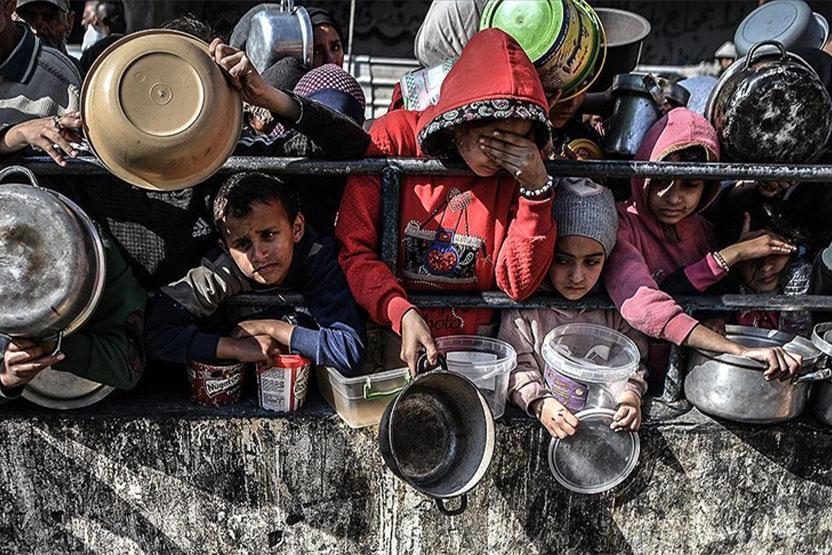
A new United Nations–backed study has revealed catastrophic levels of child malnutrition in Gaza, describing a humanitarian crisis that continues to escalate amid Israel’s ongoing assault and blockade.
According to the findings, published this week in
The Lancet medical journal, more than 54,600 children in Gaza are suffering from severe acute malnutrition, with nearly 13,000 in critical condition.
The study, conducted by the health department of the UN Relief and Works Agency for Palestine Refugees (UNRWA), examined around 220,000 children between January 2024 and mid-August 2025. Researchers found that the combination of food scarcity, displacement, and repeated infrastructure destruction has pushed Gaza’s child population into what one official described as “a state of nutritional emergency.”
Dr. Akihiro Seita, Director of Health at UNRWA and lead author of the study, warned that since the escalation of violence on October 7, 2023, Gaza’s health and humanitarian systems have been dismantled.
“Children are facing preventable diseases, acute hunger, and death,” he said. “Without a permanent ceasefire and genuine peace, this suffering will not end.”
The research found that during the 20-month monitoring period, the quantities of food, clean water, fuel, and medicines entering Gaza remained far below pre-war levels, largely due to restrictions imposed by Israeli authorities.
As a result, malnutrition, dehydration, and disease have spread rapidly among children — many of whom have lost access to both healthcare and adequate nutrition for months on end.
Since the start of the war, Israel’s bombardment and blockade have destroyed essential infrastructure, including hospitals, water systems, and food storage facilities. According to Gaza’s health authorities, the assault has left over 67,000 Palestinians dead and more than 169,000 wounded — the majority of them women and children.
In addition, famine and hunger-related illnesses have killed at least 460 people, including 154 children, as access to basic food supplies remains restricted.
Humanitarian agencies have repeatedly warned that Gaza is on the brink of a full-scale famine, driven not by natural causes but by political decisions and military constraints on aid delivery.
Satellite images and field data show that vast areas of farmland have been destroyed or rendered inaccessible, while bakeries, fuel depots, and hospitals continue to operate at minimal capacity.
“A Man-Made Catastrophe”
Experts argue that what is unfolding in Gaza is not merely a humanitarian emergency, but a man-made crisis resulting from deliberate obstruction of aid and the collapse of civilian infrastructure under continuous bombardment.
UNRWA and several international medical organizations have described the situation as “a deliberate starvation strategy”, warning that an entire generation of children could face irreversible health damage.
“The scale of child malnutrition we are witnessing today is unprecedented in Gaza,” said one humanitarian health officer involved in the study. “We are no longer talking about temporary food shortages — we are talking about long-term developmental harm and the erosion of life itself.”
Global Outcry, Limited Action
Despite mounting evidence and repeated calls from the UN, humanitarian organizations, and independent researchers, international response remains muted.
While global leaders have condemned attacks on civilians and urged Israel to lift restrictions on aid, no binding resolution has been enforced to ensure sustained access to food and medicine.
Analysts say the situation exposes the double standards of international law, where humanitarian principles are invoked in rhetoric but ignored in practice.
In the words of one observer, “Gaza has become a test of global conscience — and the world is failing.”
The UNRWA study underscores that malnutrition in Gaza is not just a symptom of poverty, but a direct outcome of prolonged siege, displacement, and systematic deprivation.
Every child counted in the report represents a story of survival amid destruction — of parents forced to feed their children grass or animal feed, of hospitals performing surgeries without anesthesia, of schools turned into overcrowded shelters.
Dr. Seita concluded the study’s remarks with a stark warning:
“Tens of thousands of young children in Gaza are battling hunger, disease, and despair. Unless the bombs stop and the aid flows freely, many of them will not survive.”
A Crisis That Defines an Era
The crisis in Gaza, experts warn, could become one of the most severe child malnutrition emergencies of the 21st century.
It not only reveals the deadly intersection of war and hunger but also raises moral questions about the world’s tolerance of collective punishment and humanitarian collapse.
As the conflict grinds on, Gaza’s children continue to pay the ultimate price — not for what they have done, but for where they were born.


Comment
Reply